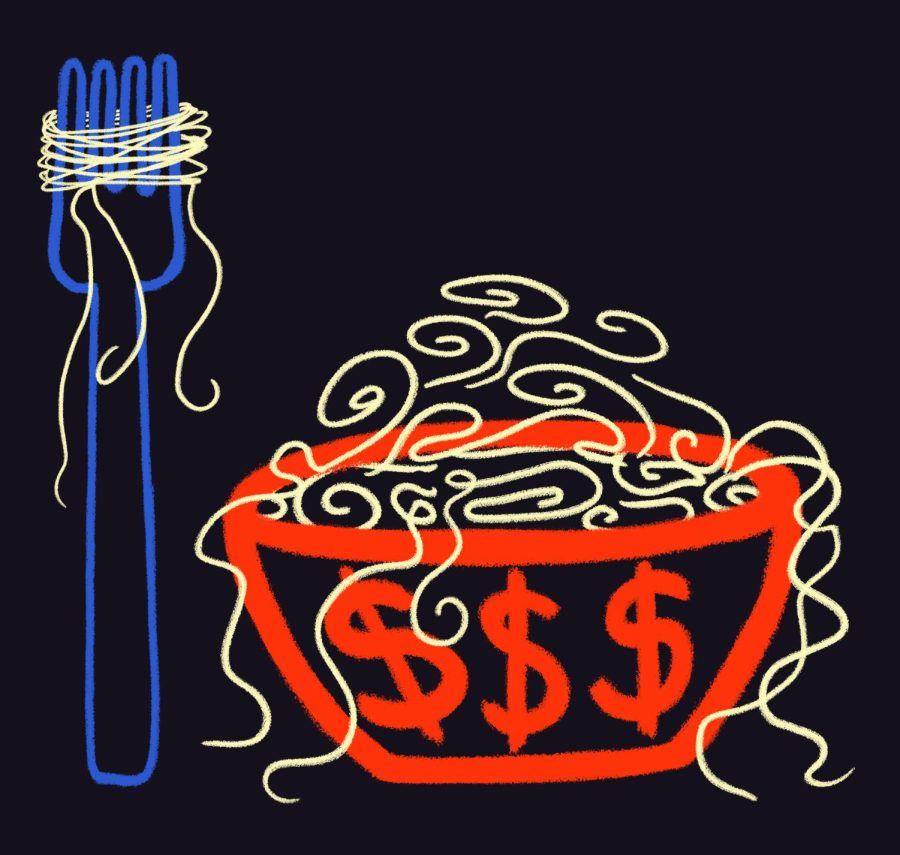College students have a lot on their plate. For decades, people have bonded over the many obstacles that come with being a college student. In addition, attending lectures, working part-time jobs and managing hefty expenses can dominate a student’s schedule.
Finding a proper balance can be tough, and in the midst of homework, exams and work, San Diego State University students have found that getting a meal is not always a piece of cake.
For first-year Nolan Christensen, early closing hours make it hard to find food after studying.
“Usually, I’ll be studying and a lot of places are closed. Usually, all of East Commons and University Towers Kitchen is closed by the time I’m done studying or doing other activities,” Christensen said. “It can be quite difficult.”
According to SDSU Dining, there are over 34 places to eat on campus. Notable spots include Chipotle, Subway, Panda Express, Starbucks and the Aztec Market. Most are either located at the Student Union or down College Avenue. Beyond that, a five-minute drive will take you to a shopping center on El Cajon where more choices open up.
Many external factors can make on-campus dining a student’s only option. Packed schedules and SDSU’s 10-minute class breaks offer a limited time to find something, making the campus the most convenient place to grab a bite. With adding long lines to the mix, a simple task like grabbing a burrito from Chipotle becomes a fight against the clock. Without a car, the choices shrink even more.
Christensen is one of many students that does not have a car on campus. For food, he primarily relies on campus dining.
“I can’t really get off campus to find food unless I want to go find the trolley, which would probably take around 30 minutes to an hour, which I don’t think is really worth it,” Christensen said.
Christensen’s circumstances align with many other students, forcing them to pay higher prices than they would off campus.
At the Aztec Market, a box of Cocoa Krispies cost $7.79. But at Vons, it’s marked at $6.49. A 12 ounce Celsius drink is $3.99, and Yerba Mates are $3.99. However, at the Vons on El Cajon, prices go for $2.99 and $3.49, respectively.
If you’re a student looking for something with protein — carbohydrates and veggies — chances are you’ll be paying over $10. From Chipotle, a burrito with a medium fountain drink will cost roughly $11.80. A chicken sandwich with fries and a drink from The Habit will cost around $15.29. Panda Express charges $9.40 for a plate, which consists of two entrees and two sides.
For a student who eats lunch and dinner on campus three days a week, they could be paying anywhere from $40 to over $100, depending on where they go.
With drinks, SDSU has a large selection of options. Not including traditional restaurants, SDSU has seven BCB cafés, seven Aztec Markets, three Starbucks and one 7-Eleven.
The Aztec Markets and 7-Eleven offer a traditionally diverse selection of energy drinks, sodas, seltzers and juices that one can expect from any college campus.
Students could get something cheap, such as a 20 ounce Pepsi for $1.99 from the Aztec Market. For something expensive, students could go for a 24 ounce java mocha smoothie from BCB.
Graduate student Alexandra Spare rarely eats on campus, citing cost as the primary reason. Spare said if more food cost $10 or less, then she would feel more comfortable dining on campus.
“I don’t really eat on campus except for Starbucks,” Spare said. “I have an off-campus apartment so I normally just cook.”
Sam Jackowski, a first-year student, has the Flex 5 meal plan. Flex 5 is one of five available meal plans students can buy for the school year. Under Flex 5, Jackowski can spend up to $29.65 on campus food from Monday through Friday. Some plans like Meals Plus and the 2nd-Year Plan give students one balance per week. Flex 7 provides students money for Saturday and Sunday.
Jackowski eats on campus often and said that prices are expensive.
“At Rubios, it’s like $3.50 for a drink. The food itself is fine, but together with the drink it makes it a lot more,” he said.
On some days, Jackowski finds himself running out of money on his meal plan, forcing him to pay out of pocket.
“I have food allergies, so (there’s) not a lot of places I can actually eat,” Jackowski said. “More options would be nice because I can only eat at a third of the actual restaurants here.”
If you find yourself struggling with food insecurity you can get free food with the Associated Students Food Pantry, located on the second floor of the Student Union.









